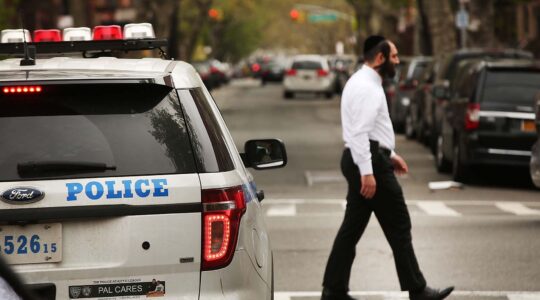Berlin: The memory of World War II crops up in unexpected places here. In idyllic-looking neighborhood parks, at busy intersections and along the streets in lively neighborhoods, one is suddenly confronted with a reminder of the city’s bloody past: plaques, small monuments and conceptual art installations recall Berlin’s former life as the home of some 173,000 Jewish citizens and their fate under the Third Reich.
# Grosse Hamburger Strasse. Next door to a hat shop and across the street from crowded cafes sits the oldest Jewish cemetery in Berlin (1828). The graves were desecrated when the Nazis dug a trench here. Only one gravestone stands today, that of the Jewish philosopher Moses Mendelssohn (1729-1786). The space now commemorates the 55,696 Berlin Jews deported to Theresienstadt and Auschwitz; the former Jewish Home for Elderly next door was used as a collection point.
# Missing House Project. Across Grosse Hamburger Strasse, Allied bombs demolished a single house on the block, sparing its neighbors. The German artist Christian Boltanski turned the space into a memorial by tracing the outlines of the destroyed apartments onto the walls of the adjacent buildings. He then listed the names, occupations, birth and death dates (where known) of the former inhabitants, both Jews and non-Jews.
# Bebelplatz. This cobblestone plaza outside the law library of Humboldt University was the site of the May 1933 book burning by Nazi students. Today a void in the pavement opens onto a white expanse of empty bookshelves, a memorial by the Israeli artist Micha Ullman. Nearby a plaque explaining the "Bibliotek" memorial includes the poet Heinrich Heine’s famous quote: "Where books are burned, so one day people will be burned as well."
# Memorial to the Deported Jewish Citizens of the Bayerische Viertel. Berlin’s prosperous Bavarian Quarter once was home to 16,000 Jews. Berlin artists Renata Stih and Frieder Schnock won a city contest to create a memorial to the neighborhood’s murdered Jews. To dislodge the seeming normalcy in the neighborhood, which was largely untouched by the war, they posted excerpts from the Nazis’ anti-Jewish laws on 80 simply illustrated signposts throughout a central square.
# Grunewald Deportation Memorial and Track 17 in Wilmersdorf. The freight depot at the train station in this upper-middle-class neighborhood was the assembly point for some 35,000 Jews who between 1941 and 1945 were deported to concentration camps. Today a memorial sculpture evocative of human shadows commemorates the victims; Track 17 has been turned into a memorial, which lists the dates, numbers and destinations of the deportations in running relief.
Support the New York Jewish Week
Our nonprofit newsroom depends on readers like you. Make a donation now to support independent Jewish journalism in New York.
# Rosenstrasse. This lane once was the site of the Berlin Jewish community’s first synagogue, inaugurated in 1714, desecrated by the Nazi pogrom in 1938 and eventually bombed in the war. A 1995 red sandstone sculpture in the green space that remains commemorates a 1943 protest by the gentile wives of Jewish workers who were being rounded up for deportation to Auschwitz, an action known as Fabrikaktion (Factory Action). Two pillars nearby, such as those used in the 1930s, are covered in newspaper reports of the event and other documentation from the period.
The New York Jewish Week brings you the stories behind the headlines, keeping you connected to Jewish life in New York. Help sustain the reporting you trust by donating today.




